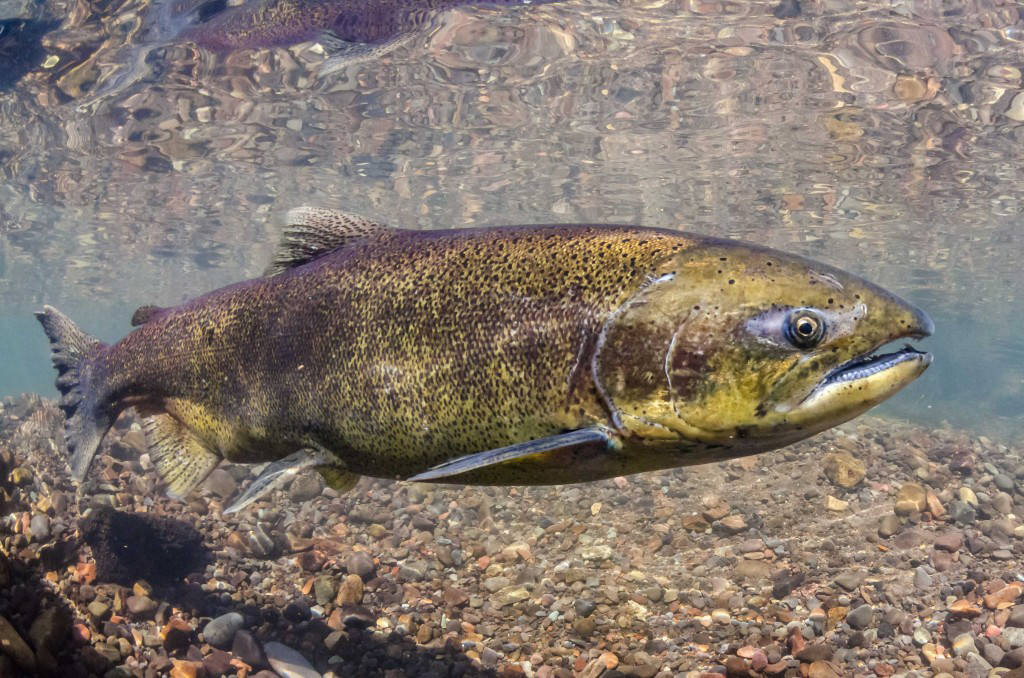Submitted by State of Washington Recreation and Conservation Office.
The Washington Salmon Recovery Funding Board announced on Dec. 16 the award of $26.1 million in grants for projects across the state aimed at bringing salmon back from the brink of extinction.
San Juan County has received $414,702. This year marks the 20th anniversary of the board’s creation and the suite of projects brings the total amount of salmon habitat restoration activities since the board’s inception to the following: 713 barriers to migrating fish corrected, giving salmon access to 2,082 miles of habitat; 537 miles of streams conserved to ensure they remain healthy habitat for generations of salmon to come; more than 48,500 acres of shorelines, estuaries, wetlands and other stream habitat restored; more than 17,700 acres of land along rivers, wetlands and estuaries cleared of invasive species.
With the recent decisions, the board has approved a total of 3,093 grants and surpassed the $1 billion investment mark since 1999, including matching funds from grant recipients.
“The work being done across the state on salmon recovery is critical,” said Gov. Jay Inslee. “These grants for on-the-ground projects will help us restore salmon to healthy levels that allow for both protection and a robust fishery. We must do everything we can to restore this beloved Washington icon and help orcas, which are starving due to lack of salmon, before it is too late.”
“These grants create many other benefits for local communities, such as better water quality, less flooding, more resiliency to climate change and a boost to our statewide economy,” said Phil Rockefeller, chair of the Salmon Recovery Funding Board. “Since the board’s beginning, its grants have created or sustained more than 4,000 jobs and contributed to the state’s economy as grant recipients spend the money for products and services.”
San Juan County projects
Friends of the San Juans was awarded $41,752 to remove 215 feet of armoring in a pocket beach on southwest Lopez Island in the outer portions of MacKaye Harbor. Removing the degraded armor will uncover buried spawning habitat previously used by the fish salmon eat. The shoreline is used by Chinook salmon, which is a species listed as threatened with extinction under the federal Endangered Species Act. The Friends of the San Juans will contribute $7,368 in another grant.
The San Juan County Public Works Department was awarded $16,420 to begin planning a project to improve tidal and fish access to a large saltmarsh north of Crescent Beach Road. Currently, a too-small culvert is plugged with sand and is restricting tidal exchange between Ship Bay and a lagoon. Culverts are pipes or other structures that carry water under roads. Often, they block fish migration because they are too steep, too tall or too small to allow fish to pass through easily. The county will complete a hydraulic study and design alternatives. Ship Bay is a core spawning habitat for herring, and Crescent Beach is a spawning beach for Pacific sand lance. Salmon eat both of these species. San Juan County will contribute $3,000 in donations of cash.
The San Juan Islands Conservation District was awarded $100,000 to transplant eelgrass and distribute seeds in Blind and Wescott Bays. The district will monitor test plots in the bays to determine their success. Increasing eelgrass will support the recovery of herring, Chinook salmon and Southern resident killer whales. Eelgrass beds provide an important habitat for migrating Chinook salmon, which is a species listed as threatened with extinction under the federal Endangered Species Act. The conservation district will contribute $17,648 in donations of labor.
The San Juan Preservation Trust was awarded $256,530 to buy a voluntary land preservation agreement, also called a conservation easement, to protect 7.3 miles of shoreline habitat, including about 0.1 mile of pocket beaches along San Juan Island’s Griffin Bay. Protecting this area will support habitat for salmon, the food they eat, and other wildlife. The San Juan Islands near-shore is used by Chinook salmon, which is a species listed as threatened with extinction under the federal Endangered Species Act, and by coho salmon, which is a federal species of concern. The trust will contribute $45,270 in donations of land.




